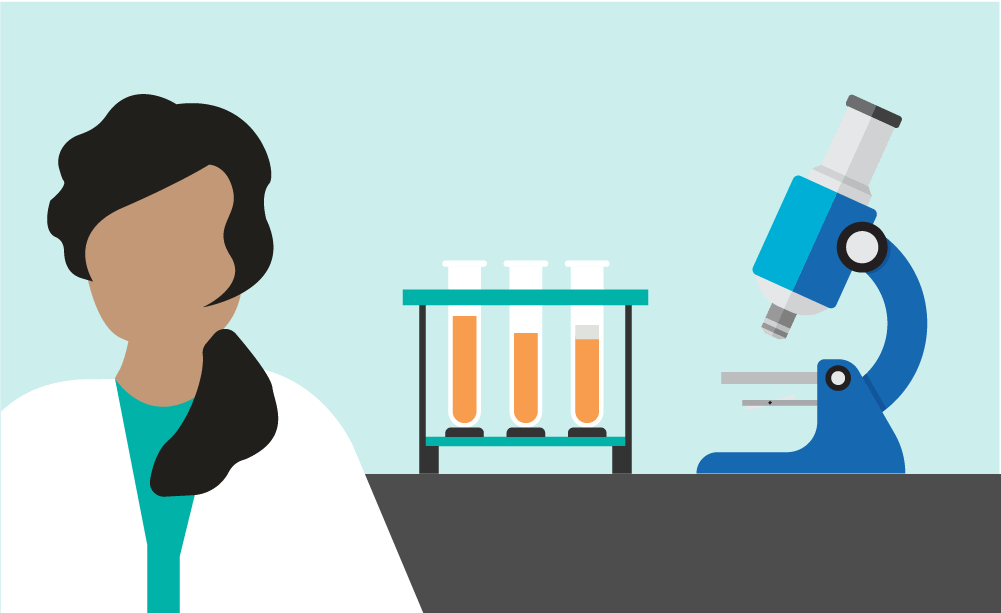HPV screening and follow-up pathway
Managing laboratory processes
 Coordination
Coordination
Recommendation: Coordination between the jurisdictional health authority/cancer programs/government ministries and laboratory services is essential to supporting implementation of HPV testing for primary cervical screening.
Key evidence and implementation considerations:
- Collaboration with labs is essential to develop standardized lab validation protocols for HPV testing and cytology.
- Processes for selecting and obtaining approval for HPV devices need to be coordinated across laboratory services and the health authority as they will affect procurement of devices and processing procedures and timelines.
- Roles and responsibilities of lab services within the processing of HPV and triage tests for cervical screening should be clearly defined.
 Recommendation: Ensure coordination between laboratory structures to ensure the proper flow of samples and results.
Recommendation: Ensure coordination between laboratory structures to ensure the proper flow of samples and results.
Key evidence and implementation considerations:
- Clear accountability should be established where more than one lab is involved in processing samples, including which lab performs HPV tests and cytology tests as appropriate and how samples are transferred between labs.
- Where possible, information technology systems should be integrated across labs and screening programs and link to vaccine registries and patient medical records.
- Clear processes should be in place for labs to relay results to the screening program and the provider who requested the test.
 Recommendation: Consider strategies to effectively utilize laboratory human resources.
Recommendation: Consider strategies to effectively utilize laboratory human resources.
Key evidence and implementation considerations:
- When HPV primary testing is adopted as the primary screening method, lab processes can be automated and cytology tests may only be used to follow-up an HPV-positive test.1 Jurisdictions should plan for how these changes will affect cytotechnologist/cytopathologist workload.2
- Evidence suggests that even though cytotechnologists will see fewer cytology slides, they will likely spend more time per slide since the sample comes from HPV-positive participants.2 It is unclear if the decrease in cases will be directly proportional to a decrease in workload. Jurisdictions should monitor this and adjust accordingly.
- Providing continuing education opportunities for cytotechnologists will support cross-training that would allow cytotechnologists to be licensed to perform other tasks within labs if and when changes in workload arise.2 Since 2014, new core competencies have been added to training curriculum for cytotechnologists, including histology and molecular testing.
 COVID-19 considerations
COVID-19 considerations
The detection of both HPV and SARS-CoV-2 involves polymerase chain reaction (PCR) testing.3 The COVID-19 pandemic has led to delays in HPV-based screening in some provinces as PCR testing sites are being used for SARS-CoV-2 testing instead.3 Jurisdictions should monitor this as they begin to roll out HPV testing.
The COVID-19 pandemic may also present an opportunity to leverage laboratory infrastructure that was developed for large-scale PCR testing, which also occurred in smaller community laboratory settings.4
Quality assurance
 Recommendation: Develop and integrate standardized screening and triage protocols, benchmarks and reporting systems for HPV testing based on evidence and best practice to allow continuity within jurisdictions.1 Jurisdictions should have built-in quality assurance parameters in their programs.
Recommendation: Develop and integrate standardized screening and triage protocols, benchmarks and reporting systems for HPV testing based on evidence and best practice to allow continuity within jurisdictions.1 Jurisdictions should have built-in quality assurance parameters in their programs.
Recommendation: Existing laboratory quality assurance policies and procedures should be reviewed and revised to reflect HPV testing quality control processes and to include standards for laboratories interpreting cytology (e.g., minimum volumes for competency).1
Key evidence and implementation considerations:
- To ensure quality standards are met and maintained, jurisdictions should develop and implement suitable program indicators as well data collection, analysis and reporting approaches/practices.1
- Canadian Partnership Against Cancer. National guidance document on HPV testing for primary screening of cervical cancer. 2016.
- Chao Y, Clark M, Carson E, et al. HPV testing for primary cervical cancer screening: A health technology assessment. CADTH Optimal Use Report. 2019; 7(1b).
- Clark M, Horton J. Self-sampling devices for HPV testing. Canadian Journal of Health Technologies. 2021; 1(12). https://doi.org/10.51731/cjht.2021.229
- Lozar T, Nagvekar R, Rohrer C, Dube Mandishora RS, Ivanus U, Fitzpatrick MB. Cervical cancer screening postpandemic: Self-sampling opportunities to accelerate the elimination of cervical cancer. Int J Womens Health. 2021; 13:841-859. doi:10.2147/IJWH.S288376
